We’re still riding the high of the launch of our Brazil collection for Lime Ricki and today I wanted to give a little more insight into the inspiration behind it. Brazil is a full of art and culture that we just don’t hear about all too often. I tend to go a little overboard in the research phase so hopefully this isn’t a snooze for you-ha!
Brazil as inspiration
I’ve mentioned that I lived in Brazil for a couple of years in my early twenties, but it’s since that time that I’ve learned more about the art and culture of Brazil that influenced the design and I’ve become totally obsessed. While Brazilian culture was so popular in the 50s and 60s internationally, it seems like we’ve kind of lost out on a lot since then so I was happy to re-connect with it.
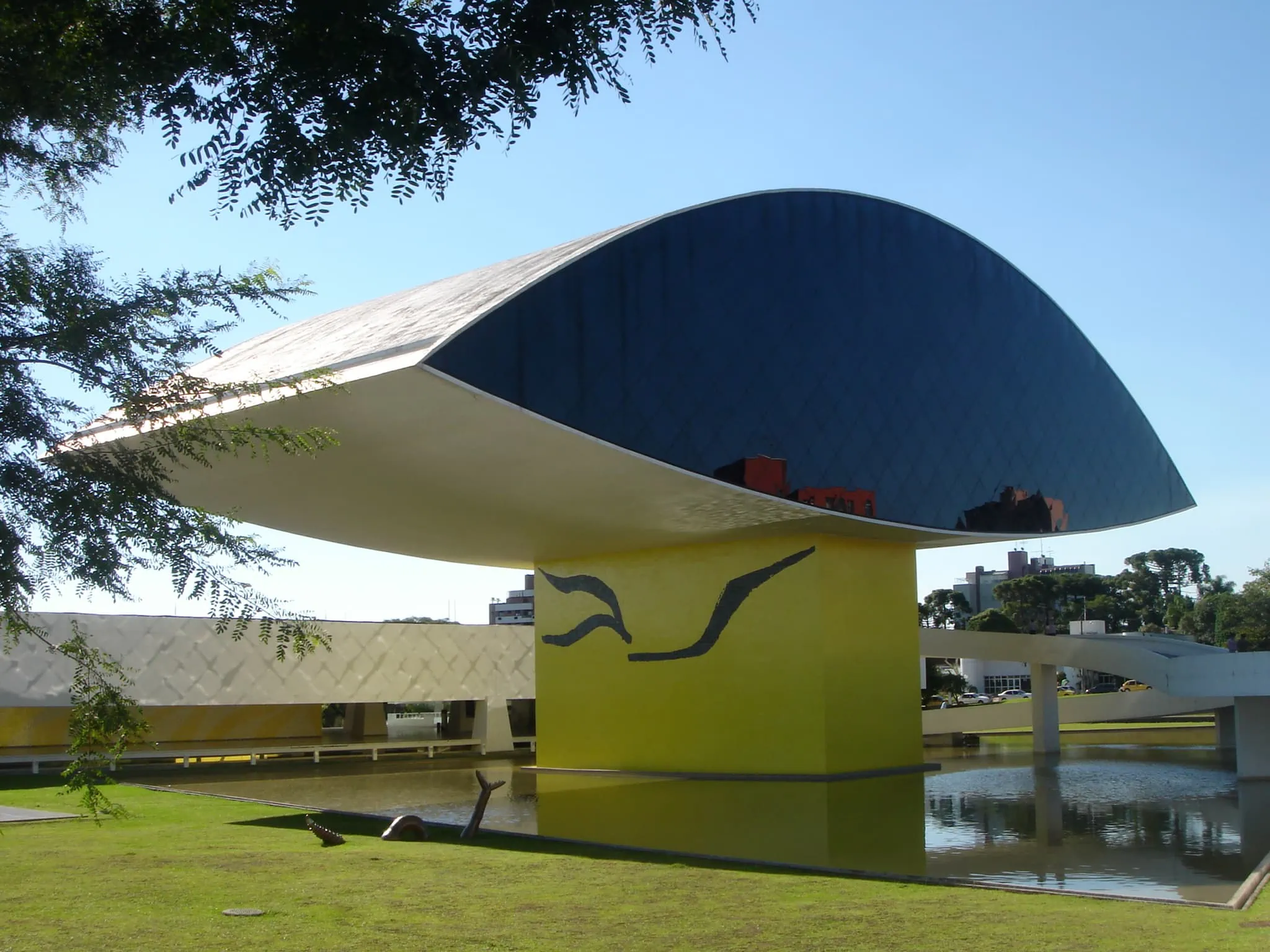
Our first collection was inspired by Scandinavia and my time living there, but this time around I wanted that felt something distinctly different. Something that felt more tropical, more beachy, but without the classic palm fronds that have been so popular in recent years. I immediately took to what I knew–Brazil–and let that be the guide. I lived in a large metropolitan city called Curitiba, which is known for it’s incredible city planning and advanced public transportation. It’s really an extraordinary city that has pockets of cultures from around the world: Italian, Japanese, Ukrainian. It also has an art museum in the shape of an eye ball…so there’s that. I wasn’t in Brazil to necessarily soak in all the art and culture but I knew there was rich culture waiting for me.
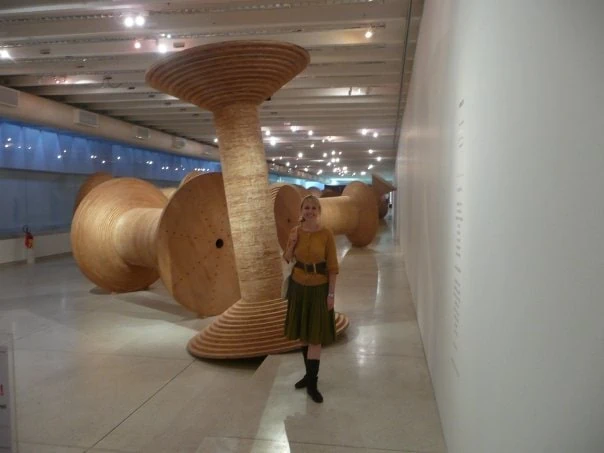
The artistry and uniqueness of Rio de Janeiro
When I went back to visit a few years later I took a tour through a number of cities including Rio de Janeiro, which was eye-opening. Again, I didn’t know too much about it except for some basic info about bossa nova due to singing A Garota de Ipanema at a talent shot (LOLZ), the classic composer Villa-Lobos thanks to a trip to his museum, and the amazing sidewalks. I was stunned by the graffiti art plastering the walls and the proximity of the large glamorous apartment buildings so close to the iconic beaches of Copacabana. Meanwhile, I stayed in a nearby hostel.
Visiting the famous Cristo Redentor was another major highlight. Set on the mountain in a national park overlooking the Guanabara Bay, it truly is a wonder to behold. There’s a clear view of Pao de Acucar, or Sugar Loaf Mountain, the unique shaped landmark, which, turns out, is named because it looked like a loaf of sugar, which was the main export aided by the slave trade.
Now, I know you can go and find all this history out for yourself, but it’s so interesting to include it here with all the wonder and bright colors of what we know of Brazil. I think we tend to view Brazil as one big party, and to be honest, it is a lot of that, and I definitely wanted that to be communicated, but it’s so much richer that that.
Art and culture in Brazil
Right before the launch of our collection I ran into my friend, Rex Nielson, who is the professor of Portuguese at Brigham Young University. He gave the Lars and Lime Ricki teams a lecture about the history of culture and art in Brazil and let me tell you–it was FASCINATING! I learned so much. And I wish that we had done it months ago! Again, don’t worry, I won’t give you a full lecture here, but I’ll include a few books below in case you’re looking to learn more.
Bossa nova set the tone
What I’ve been drawn to over the years is the cool tones of the bossa nova music movement that arose in the artistic beach culture of Rio de Janeiro in the 1950s. It was basically a new way of playing samba music that landed with the arrival of singer/song writer and guitarist, Joao Gilberto, and his pinnacle album in 1959. I’ve been trying to pin point why I love bossa nova so much and each time it always comes back to Joao Gilberto. Go have a listen if you’re new to it. It instantly transports me to another place. I started listening to bossa nova once we settled on the direction of the collection and haven’t stopped. I’ll be sharing a play list soon!
Portuguese Pavements (Calçada)
Now, as for the specific patterns of our collection, first, let’s talk about the calçada pattern. In Curitiba, I became very familiar with the famous black and white Portuguese pavements, which, I’m sure, you’ve probably seen. While they are even more famous in Rio de Janeiro, they were everywhere in Curitiba. They’re made of small stones arranged in really beautiful patterns. These sidewalks are incredibly labor some to create and even harder to maintain and quite slippery when wet (I found out the hard way) so a lot of cities are trying to replace them. It’s so bittersweet as I see the immense beauty in them, but also the impracticality.
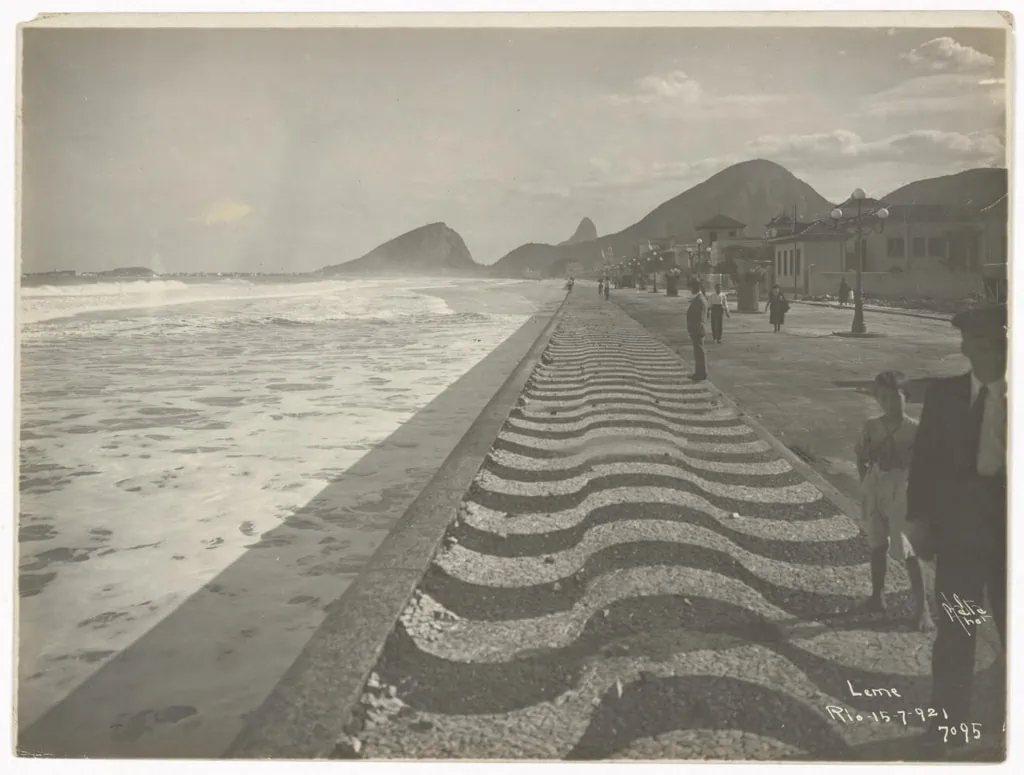
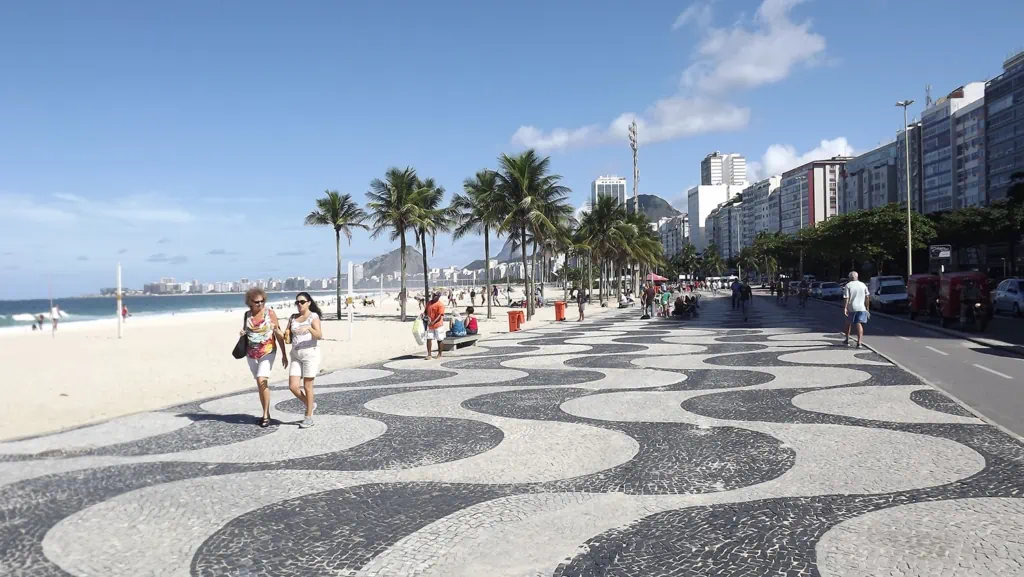
The beaches of Rio like Ipanema and Copacabana are known for their extraordinary board walks covered in these famous patterns. They were designed by Roberto Burle Marx in the 70s even though they had been there since the early 20th century. You can certainly feel the mod coming out of the pattern, a nod to the time. Each sidewalk is different so you can know where you are based on the pattern. I spotted a cute little flower motif in one of the sidewalk patterns, which became the pattern of Calçada. We were also inspired by the graphic wavy pattern, which turned into our blue and white sarong pattern. It’s perfectly beachy in all the ways!
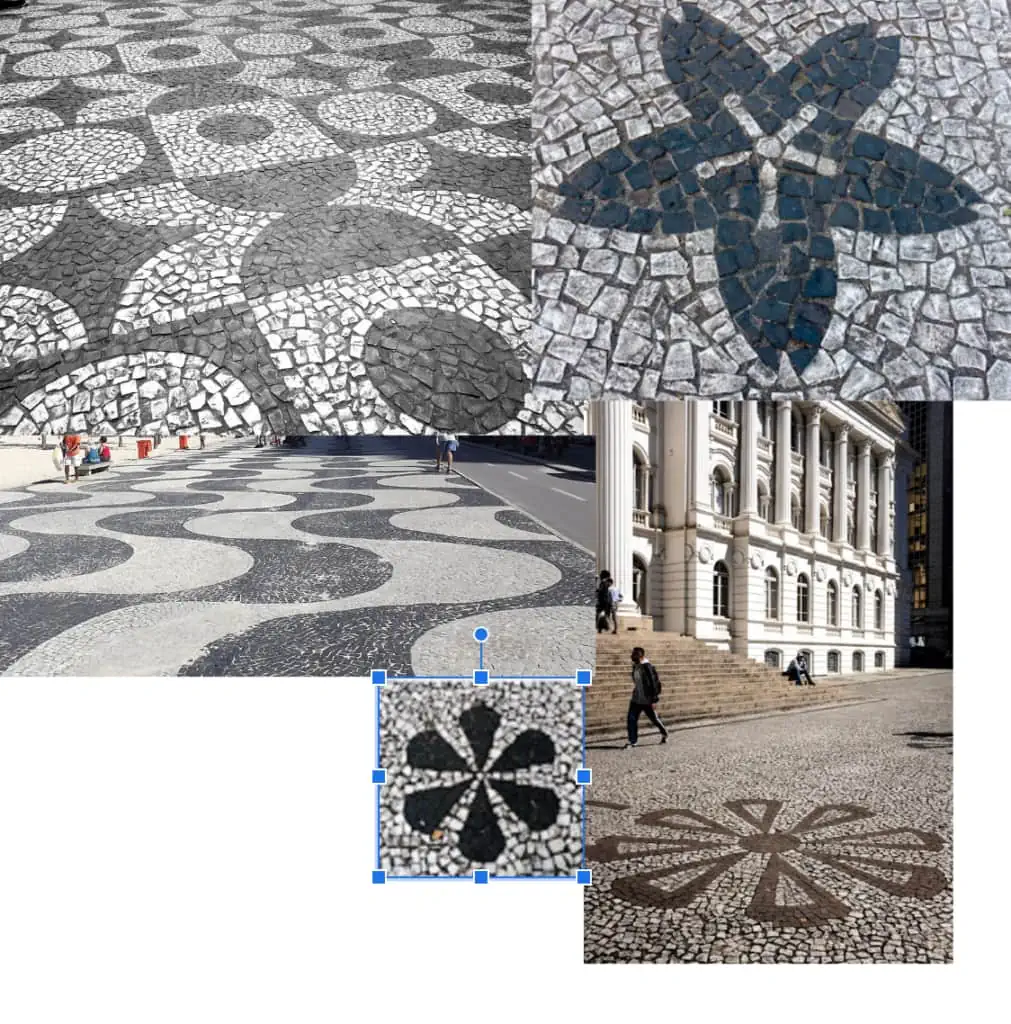
How it influenced the collection
We wanted to keep the pattern to a classic black and white palette, which is where we got the long sleeve rash guard, bralette, and boy short, and the square neck tankini, but then, of course, we had to try it out in a number of color ways like the patchwork one piece, peplum, square neck crop top and blue flower boy short.
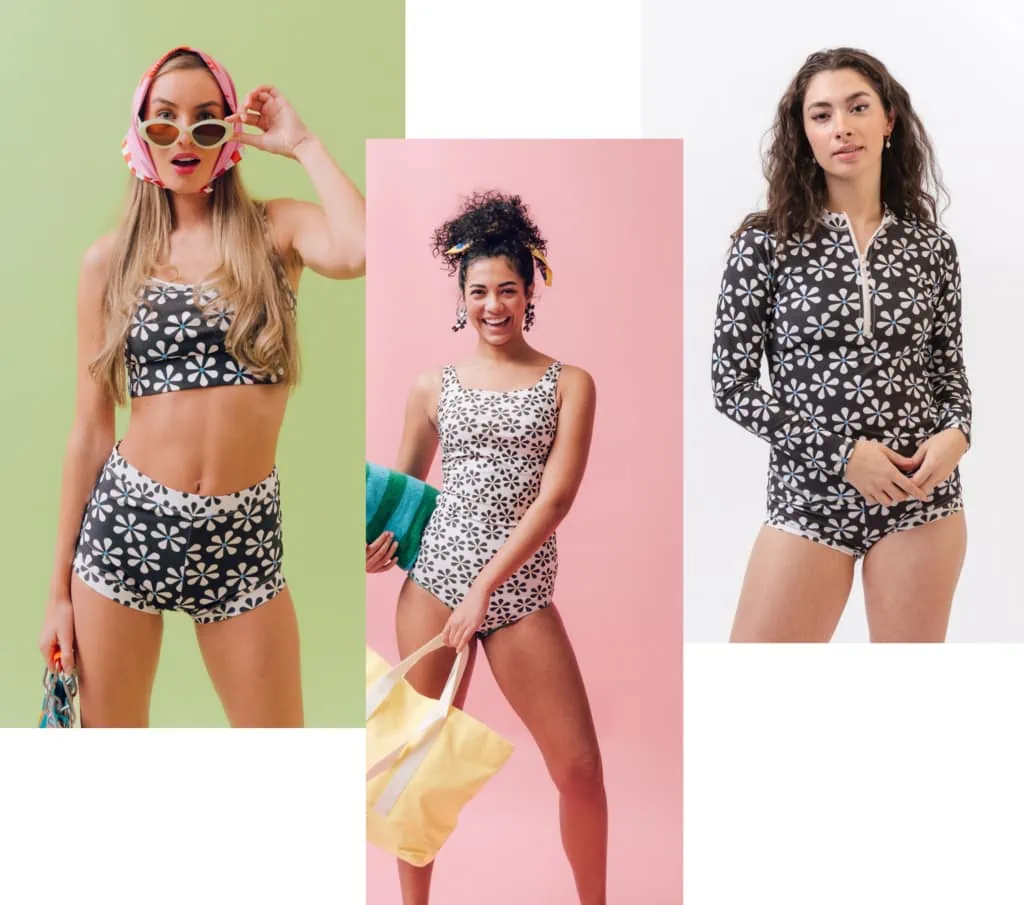
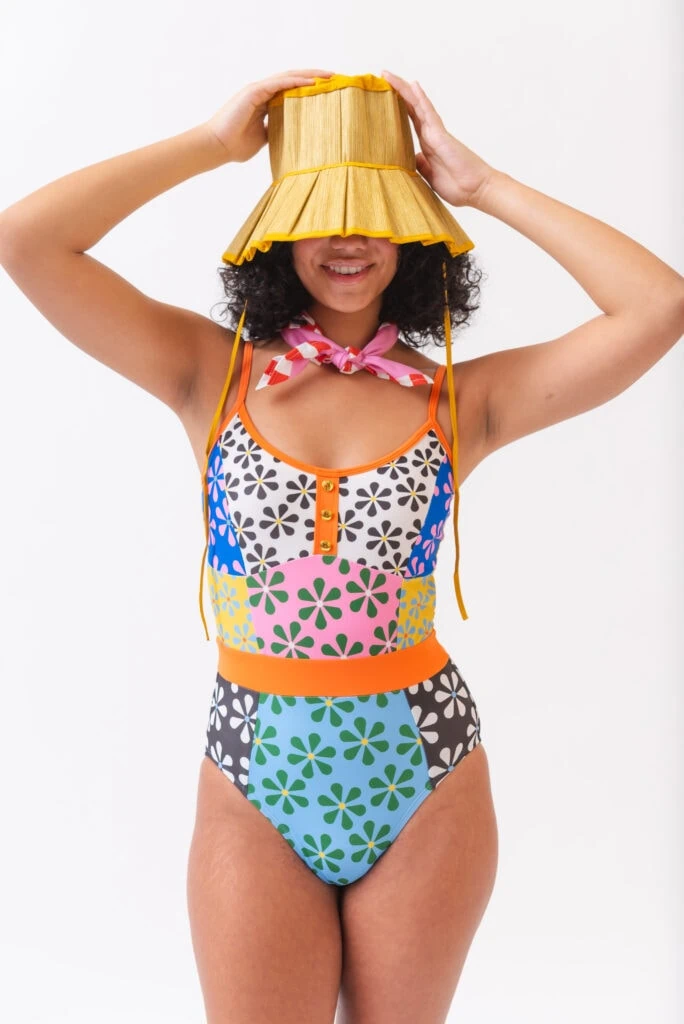
Umbrella stripes
Being from a beach town myself, I was used to going all the time, but I noticed how differently the Brazilians used their beaches. They brought umbrellas, or you could rent them, and stake out for the day. The beaches are typically so full that all you can see are dotted umbrellas like this image, this image, and this one . I wanted to capture the extraordinary colors and stripes and this became the umbrella stripe. Garet, our designer, created a number of color ways for the stripes and Lime Ricki worked their magic and applied as many as we could get on a suit without going totally bananas. I ADORE how this one turned out and apparently you did too because it’s currently our number one selling suit! It comes in a bralette and boy short and it’s so good. Color blocking at its best!
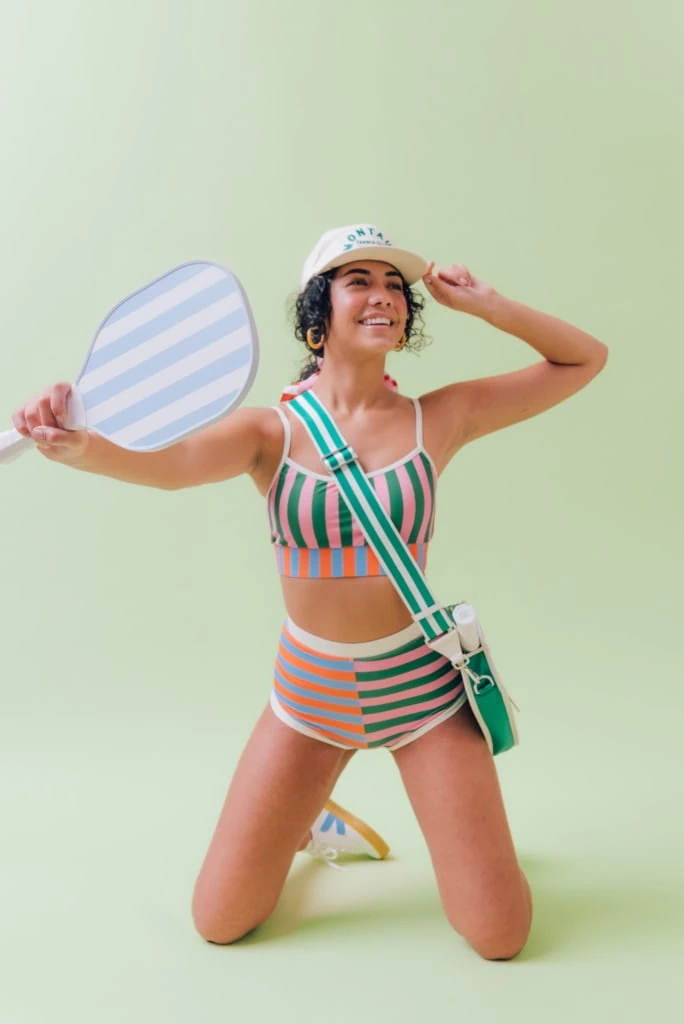
Passion Fruit Flower pattern
Lastly, I wanted to explore the flora of the area. Passion fruit is a big part of Brazilian cuisine, and I have grown to adore the passion fruit flower pattern. Have you ever seen on in person? They’re extraordinary! With those sinuous curly cues and string-like corona filments, they are so unique. I remember one of my favorite designers, Josef Frank, took a turn at a Brazilian design and I loved his take on it with the native fruits and flowers and I want to use it for something one day. For this collection, I wanted the color to come through with it so we kept it simple with a single passion fruit flower in great color combinations and Garet did a great job of capturing it.
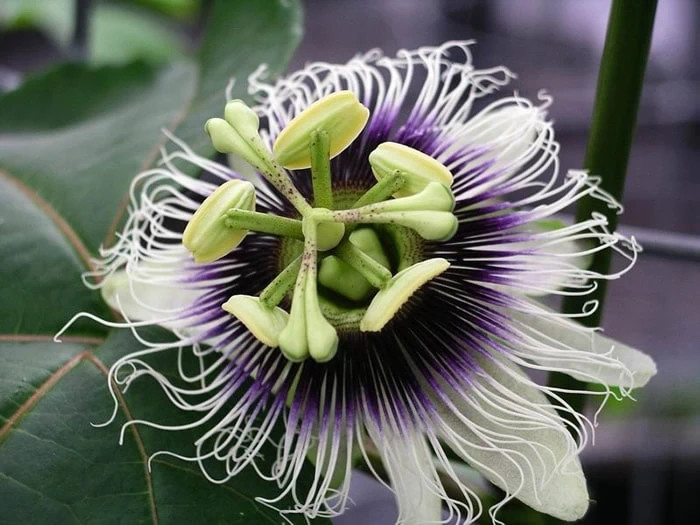
One of my favorite pieces is the color block passion fruit high neck one piece, that beautifully captures the color block effect. Along with the blue/green crop top and skirt and reversible briefs with passion fruit on one side and calcada on the other.
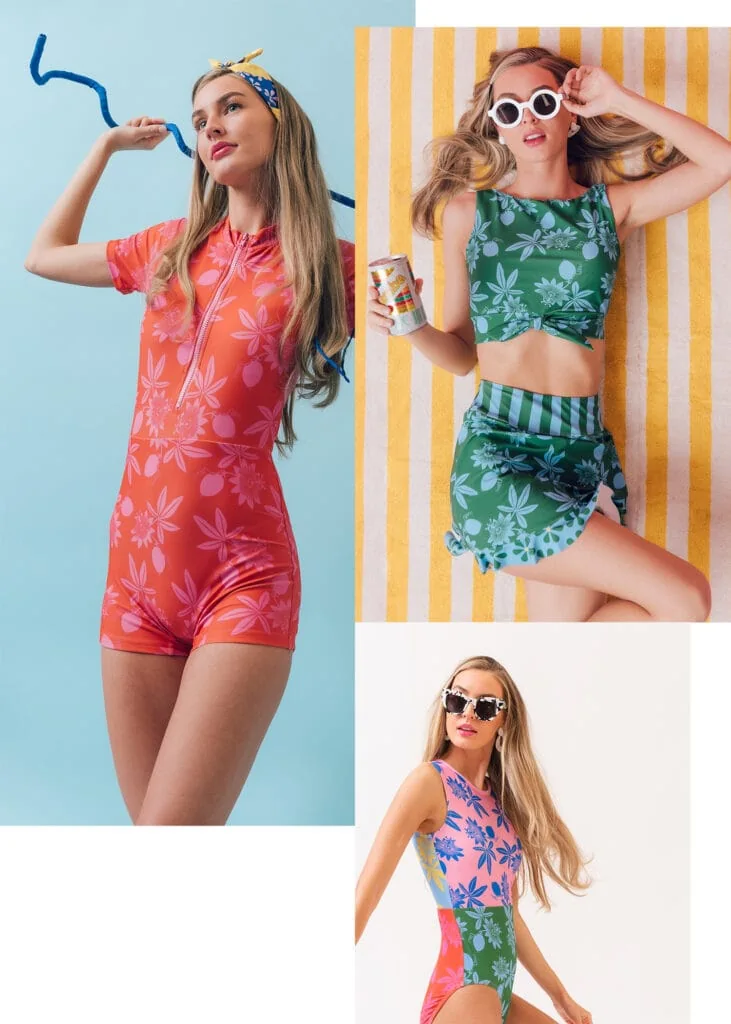
Brazil Collection through the lens of old photos
To bring the collection to life, I wanted to play with some old black and white photos of the iconic beaches of Ipanema and Copacabana. We found some that captured the what we were going for and tried to Lars-ify them with some fun colored doodles to capture the energy.
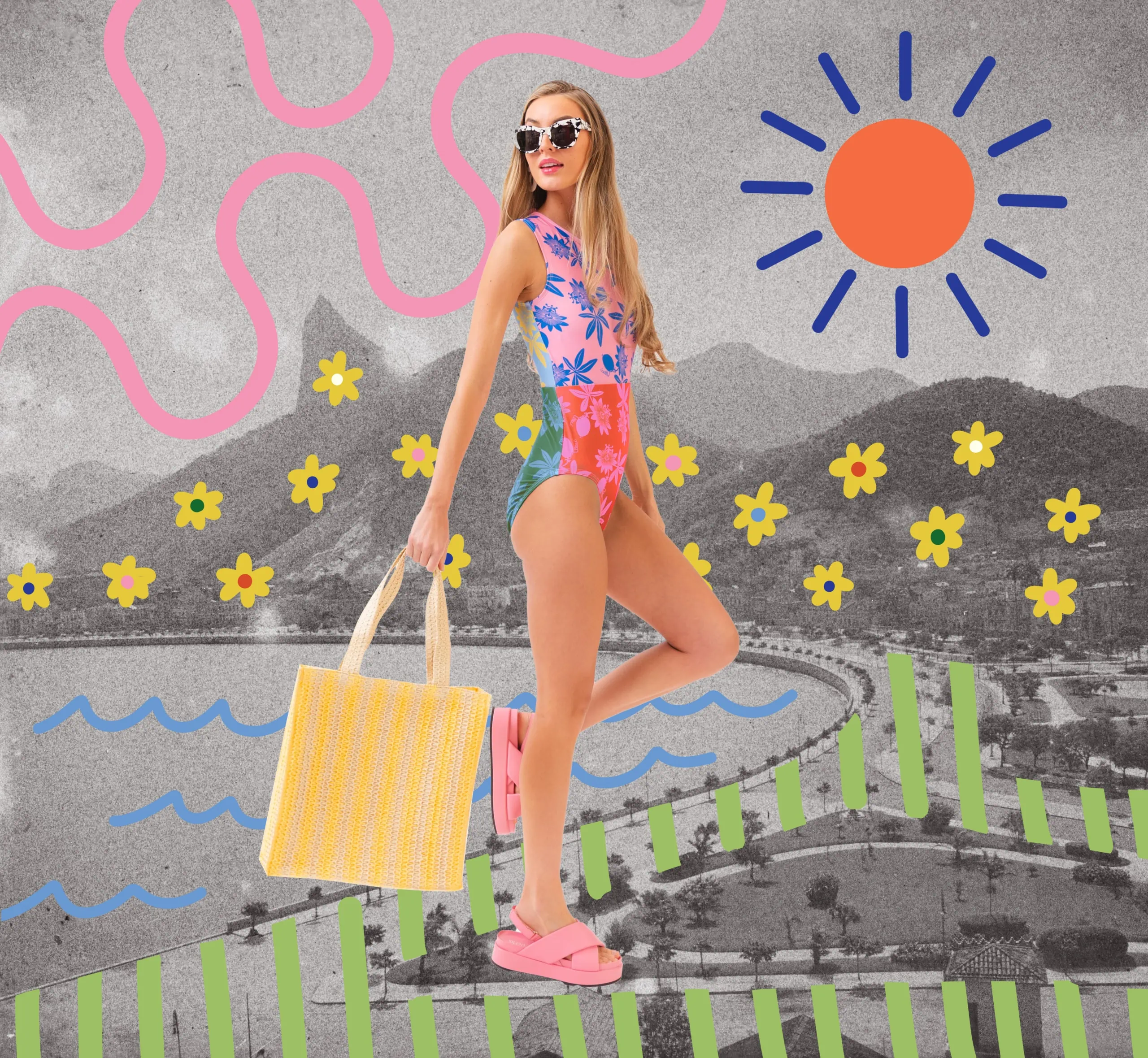
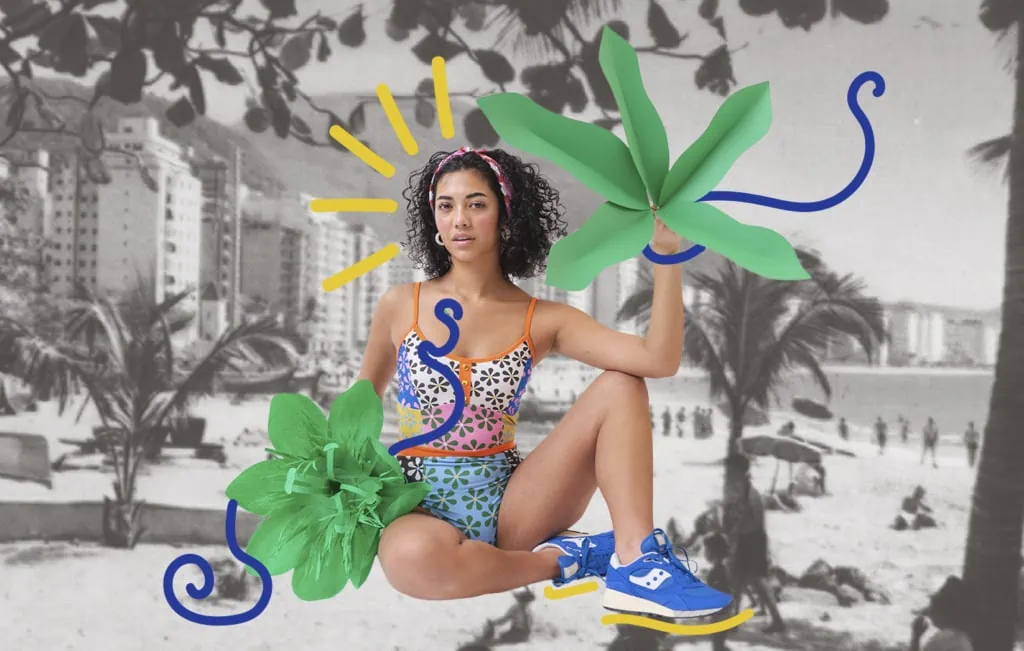
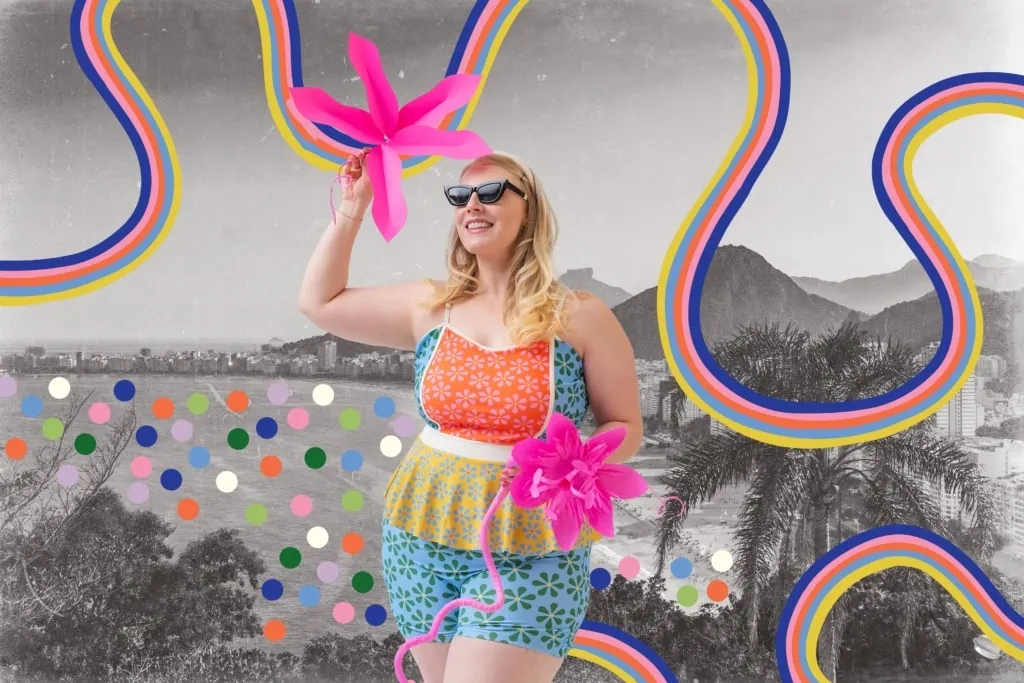
I’m thrilled with how our collection turned out and I have to give a big huge thank you for Garet, our designer, who nailed it!; Jenny our brand manager who keeps us all on track and brought it to life, and Team Lime Ricki who let us go town town. I find so much satisfaction and fullness when we can dig a bit deeper into the history to bring something to life.
I hope you enjoy Brazil as much as we did making it! You can find the full Brazil collection here.


